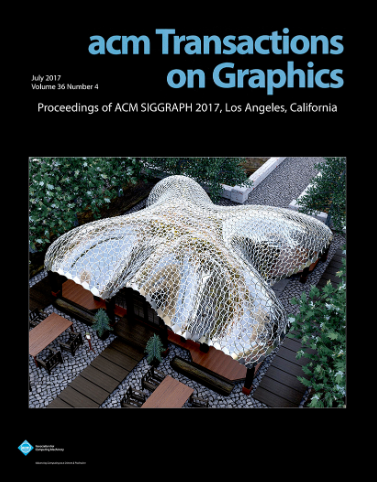StyleTex:三维模型的样式图像引导纹理生成
IF 9.5
1区 计算机科学
Q1 COMPUTER SCIENCE, SOFTWARE ENGINEERING
引用次数: 0
摘要
风格引导纹理生成的目的是,在给定参考风格图像和带有文字说明的三维网格的情况下,生成与参考图像的风格和输入网格的几何形状相协调的纹理。尽管基于扩散的三维纹理生成方法(如蒸馏采样)在风格化游戏和电影中有着大量的应用前景,但它需要解决两个难题:1) 将三维模型的风格和内容与参考图像完全分离;2) 使生成的纹理与参考图像的色调、风格和给定的文字提示相一致。为此,我们推出了基于扩散模型的创新框架 StyleTex,用于为 3D 模型创建风格化纹理。我们的主要见解是在基于扩散的蒸馏采样中,将风格信息与参考图像分离,同时忽略内容。具体来说,在给定参考图像的情况下,我们首先从图像 CLIP 嵌入中分解其风格特征,方法是减去嵌入在内容特征方向上的正交投影,内容特征由文本 CLIP 嵌入表示。我们采用新颖的方法来分离参考图像的风格和内容信息,从而生成不同的风格和内容特征。然后,我们将风格特征注入交叉关注机制,将其纳入生成过程,同时利用内容特征作为负面提示,进一步分离内容信息。最后,我们将这些策略整合到 StyleTex 中,从而获得风格化纹理。我们利用区间分数匹配来解决过度平滑和过度饱和的问题,并结合几何感知控制网来确保整个生成过程中几何形状的一致性。StyleTex 生成的纹理既保留了参考图像的风格,又与文字提示和给定 3D 网格的内在细节保持一致。定量和定性实验表明,我们的方法明显优于现有的基线方法。本文章由计算机程序翻译,如有差异,请以英文原文为准。
StyleTex: Style Image-Guided Texture Generation for 3D Models
Style-guided texture generation aims to generate a texture that is harmonious with both the style of the reference image and the geometry of the input mesh, given a reference style image and a 3D mesh with its text description. Although diffusion-based 3D texture generation methods, such as distillation sampling, have numerous promising applications in stylized games and films, it requires addressing two challenges: 1) decouple style and content completely from the reference image for 3D models, and 2) align the generated texture with the color tone, style of the reference image, and the given text prompt. To this end, we introduce StyleTex, an innovative diffusion-model-based framework for creating stylized textures for 3D models. Our key insight is to decouple style information from the reference image while disregarding content in diffusion-based distillation sampling. Specifically, given a reference image, we first decompose its style feature from the image CLIP embedding by subtracting the embedding's orthogonal projection in the direction of the content feature, which is represented by a text CLIP embedding. Our novel approach to disentangling the reference image's style and content information allows us to generate distinct style and content features. We then inject the style feature into the cross-attention mechanism to incorporate it into the generation process, while utilizing the content feature as a negative prompt to further dissociate content information. Finally, we incorporate these strategies into StyleTex to obtain stylized textures. We utilize Interval Score Matching to address over-smoothness and over-saturation, in combination with a geometry-aware ControlNet that ensures consistent geometry throughout the generative process. The resulting textures generated by StyleTex retain the style of the reference image, while also aligning with the text prompts and intrinsic details of the given 3D mesh. Quantitative and qualitative experiments show that our method outperforms existing baseline methods by a significant margin.
求助全文
通过发布文献求助,成功后即可免费获取论文全文。
去求助
来源期刊

ACM Transactions on Graphics
工程技术-计算机:软件工程
CiteScore
14.30
自引率
25.80%
发文量
193
审稿时长
12 months
期刊介绍:
ACM Transactions on Graphics (TOG) is a peer-reviewed scientific journal that aims to disseminate the latest findings of note in the field of computer graphics. It has been published since 1982 by the Association for Computing Machinery. Starting in 2003, all papers accepted for presentation at the annual SIGGRAPH conference are printed in a special summer issue of the journal.
 求助内容:
求助内容: 应助结果提醒方式:
应助结果提醒方式:


